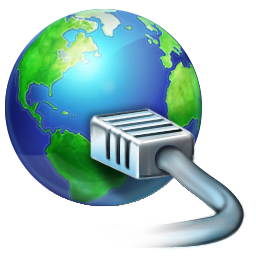Wired Networking (LAN)

Wired LANs use Ethernet cables and network adapters. Although two computers can be directly wired to each other using an Ethernet crossover cable, wired LANs generally also require central devices like hubs, switches, or routers to accommodate more computers.
For dial-up connections to the Internet, the computer hosting the modem must run Window's Internet Connection Sharing (ICS) or similar software to share the connection with all other computers on the LAN. Broadband routers allow easier sharing of cable modem or DSL Internet connections, plus they often include built-in firewall support.
Ethernet cables must be run from each computer to another computer or to the central device. It can be time-consuming and difficult to run cables under the floor or through walls, especially when computers sit in different rooms. Some newer homes are pre-wired with cable, greatly simplifying the cabling process and minimizing unsightly cable runs.
The correct cabling configuration for a wired LAN varies depending on the mix of devices and the type of Internet connection.
After hardware installation, the remaining steps in configuring either wired or wireless LANs do not differ much. Both rely on standard Internet Protocol and network operating system configuration options. Laptops and other portable devices often enjoy greater mobility in wireless home network installations (at least for as long as their batteries allow).
Ethernet cables, hubs and switches are very inexpensive. Some connection sharing software packages, like ICS, are free; some cost a nominal fee. Broadband routers cost more, but these are optional components of a wired LAN, and their higher cost is offset by the benefit of easier installation and built-in security features.
Wired LANs offer superior performance. Traditional ethernet connections offer 100 Mbps bandwidth, but 1000 Mbps ethernet technology costs little more and is readily available. Traditional ethernet connections should be sufficient for home file sharing, gaming, and high-speed Internet access for many years into the future.
Wired LANs utilizing hubs can suffer performance slowdown if computers heavily utilize the network simultaneously. Use Ethernet switches instead of hubs to avoid this problem; a switch costs little more than a hub.











